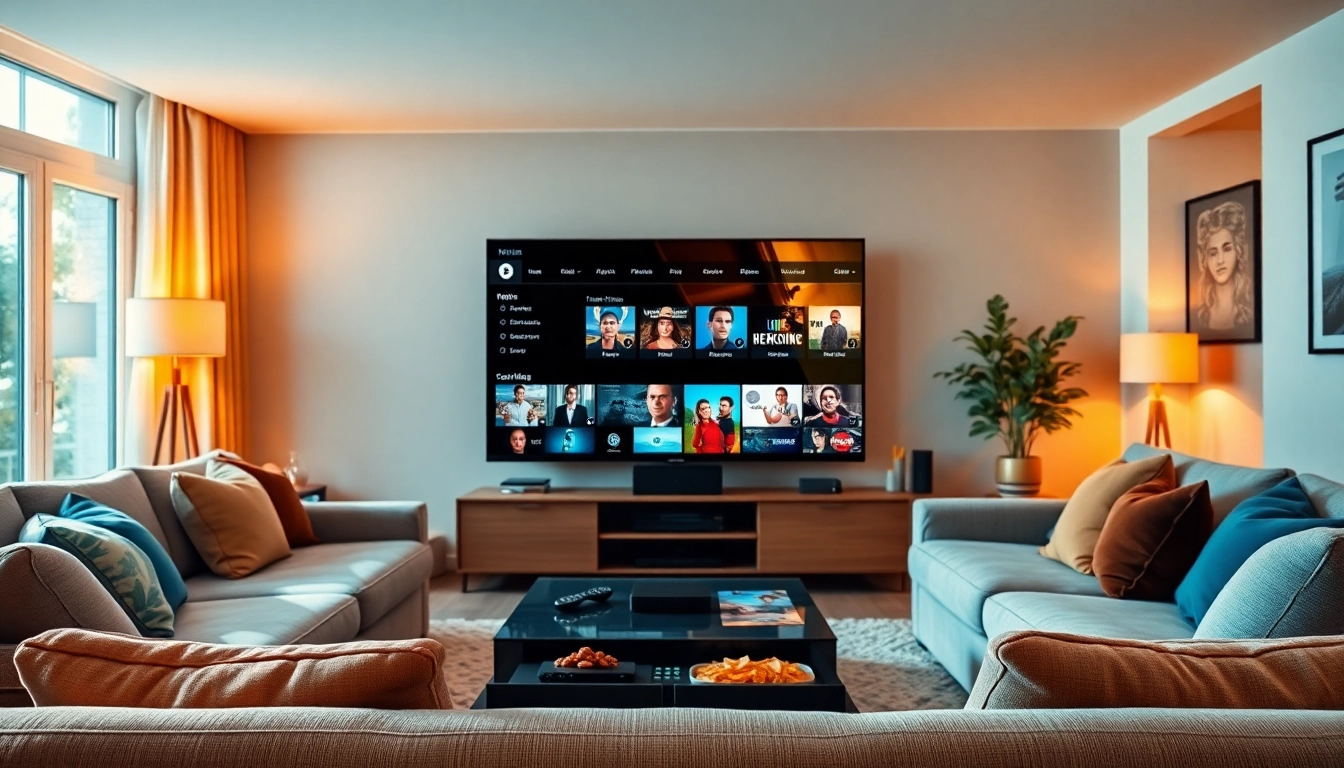Introduction to Web Design Companies in Kansas City
Kansas City has emerged as a vibrant hub for digital innovation, particularly in the realm of web design. The increasing demand for user-focused, visually appealing, and functional websites has given rise to numerous web design companies in kansas city. Understanding these companies’ unique offerings, as well as the local market dynamics, is crucial for businesses aiming to make a mark in the online landscape.
Understanding the Local Market
The Kansas City area boasts a diverse economy that spans technology, healthcare, finance, and retail. As businesses in these sectors strive to establish a strong online presence, the need for exceptional web design becomes apparent. Here, competition is fierce yet collaborative, with many companies leveraging local talent and resources to create standout websites. This competitive spirit enhances the overall quality of design services available, making it essential for companies to sharpen their value propositions.
Key Characteristics of Effective Web Design
Effective web design transcends mere aesthetic appeal; it incorporates functionality, usability, and adaptability. Here are key characteristics of successful designs:
- User-Centric Approach: The design should prioritize user needs and preferences, offering a seamless navigation experience.
- Responsive Design: Websites must perform optimally across devices, ensuring consistent accessibility.
- Intuitive Navigation: Clear menus and pathways are essential for user engagement and retention.
- Consistent Branding: Visual coherence through consistent colors, fonts, and logos strengthens brand identity.
- SEO-Friendly Elements: Incorporating SEO best practices is vital for visibility in search engine results.
Importance of User Experience in Web Design
User experience (UX) is at the heart of web design, greatly influencing how visitors interact with a site. Research shows that businesses that prioritize UX often benefit from higher engagement rates and lower bounce rates. Effective UX design focuses on understanding user behavior, preferences, and pain points, enabling designers to create websites that resonate with users. Furthermore, personalized experiences, such as tailored recommendations and intuitive search functionalities, enhance overall satisfaction and encourage repeat visits.
Essential Features of Modern Web Design
Responsive Design Principles
Responsive design is no longer optional; it is a necessity. With the significant rise in mobile device usage, websites must be designed to adapt to various screen sizes and resolutions. A responsive design employing fluid grids, flexible images, and CSS media queries ensures that all users enjoy an optimal viewing experience, whether they access the site from a desktop, tablet, or smartphone. Additionally, Google acknowledges mobile-friendliness as a ranking factor, further stressing the importance of responsive design.
Integration of SEO Best Practices
Integrating SEO best practices into web design is crucial for enhancing discoverability. Effective web design should include:
- HTML Tags: Use of semantic HTML tags plays a significant role in improving search engine indexing.
- Fast Load Times: Optimizing images, leveraging browser caching, and minifying CSS and JavaScript files contribute to faster load times—essential for retaining visitors.
- Mobile Optimization: As discussed, mobile-optimized sites are favored by search engines, so it’s imperative to incorporate responsive design.
- Quality Content: Providing valuable and relevant content enhances user engagement and signals to search engines that your site is trustworthy.
- Clear URL Structures: Search engines favor URLs that are user-friendly and descriptive.
Visual Aesthetics and Branding
Visual appeal is undeniably vital in web design. Effective use of color schemes, typography, and imagery not only captures attention but also communicates the brand’s values and message. Consistent branding across platforms fosters trust and recognition, making it easier for customers to connect emotionally with the brand. Companies should be mindful of their design aesthetics while ensuring they align with their brand identity and ethos to establish a coherent online presence.
Process for Choosing the Right Web Design Company
Evaluating Portfolios and Case Studies
When selecting a web design company, examining their portfolio is essential. It provides insight into their design style, creativity, and versatility. Companies should look for:
- Diversity: A varied portfolio indicates the company’s ability to cater to different industries and design preferences.
- Relevance to Your Industry: Case studies relevant to your business sector can provide assurance of their understanding of your market.
- Design Trends: Observing how the firm has integrated modern design trends can indicate their commitment to staying current.
Questions to Ask During Consultations
Engaging with potential web design companies through initial consultations is an excellent way to gauge their suitability. Key questions to consider include:
- What is your design process? Understanding their approach can help ensure it aligns with your expectations.
- How do you handle project deadlines? Timeliness is crucial in web development, so knowing their scheduling practices is important.
- Do you offer post-launch support? Ongoing support can be a significant factor in ensuring the website remains functional and updated.
- Can you elaborate on your SEO practices? This will help you understand how they integrate SEO into their design process.
- What is your methodology for client communication? Clear communication is essential for a successful partnership.
Understanding Pricing Models
Pricing can vary widely among web design firms, depending on their services, expertise, and market position. Common pricing models include:
- Fixed Pricing: A set fee for a specific range of services; beneficial for clients with a clear budget.
- Hourly Billing: Charges are based on the hours worked; suitable for projects with unpredictable scopes.
- Value-Based Pricing: Prices are determined by the value delivered, which can lead to higher costs but may also yield greater returns.
Understanding how these pricing models align with your budget and expectations is crucial for choosing a fitting web design partner.
Common Challenges Faced by Web Design Companies
Managing Client Expectations
One of the most significant hurdles web design companies face is managing client expectations. Clients may have differing levels of understanding regarding what constitutes a quality website, which can lead to miscommunication and dissatisfaction. Effective strategies to mitigate these challenges include setting clear project objectives, providing detailed timelines, and using visual mockups when discussing design concepts. Regular updates and check-ins can also help align expectations, ensuring clients feel involved and informed throughout the design process.
Adapting to Rapid Technological Changes
The digital landscape is continually evolving, with new tools and technologies emerging regularly. Staying abreast of these changes presents a challenge for web design companies as it requires ongoing education and skill development. Firms should foster a culture of continuous learning, encouraging their teams to participate in workshops, webinars, and industry conferences. Such initiatives not only enhance design capabilities but also keep companies competitive in the market.
Staying Ahead of Design Trends
Keeping up with ever-changing design trends is vital for web design companies to offer fresh and relevant services. Companies should devote resources to research and development, analyzing competitor offerings and market needs. Engaging with design communities online can provide valuable insights into emerging trends and best practices. Furthermore, soliciting feedback from clients about their needs and preferences will help tailor design services to stay relevant.
Measuring Success in Web Design
Key Performance Indicators for Web Projects
To gauge the success of web design projects, numerous key performance indicators (KPIs) can be monitored. These include:
- Website Traffic: Tracking unique and returning visitors showcases engagement levels.
- Conversion Rates: Assessing how many visitors take the desired actions (e.g., making a purchase, signing a newsletter) indicates effectiveness.
- Bounce Rates: A high bounce rate may signal that users are not finding what they need, suggesting a need for design improvement.
- User Feedback: Collecting insights from users through surveys can offer valuable input on the site’s usability and design quality.
Feedback Mechanisms from Users
Incorporating feedback mechanisms such as surveys, usability tests, and analytics can help inform design choices and continuous improvements. Understanding user pain points and preferences keeps the design and functionality aligned with user expectations. Regularly analyzing this data enables web design companies to iterate and refine their designs post-launch effectively.
Continuous Improvement Strategies
Successful web design companies embrace a culture of continuous improvement. Implementing agile methodologies allows firms to adapt quickly to feedback and changing market conditions. This iterative approach enables ongoing enhancements to websites, ensuring they remain effective and competitive. Regular reviews of performance data can pinpoint areas for improvement, guiding future updates and optimizations.













Leave a Reply